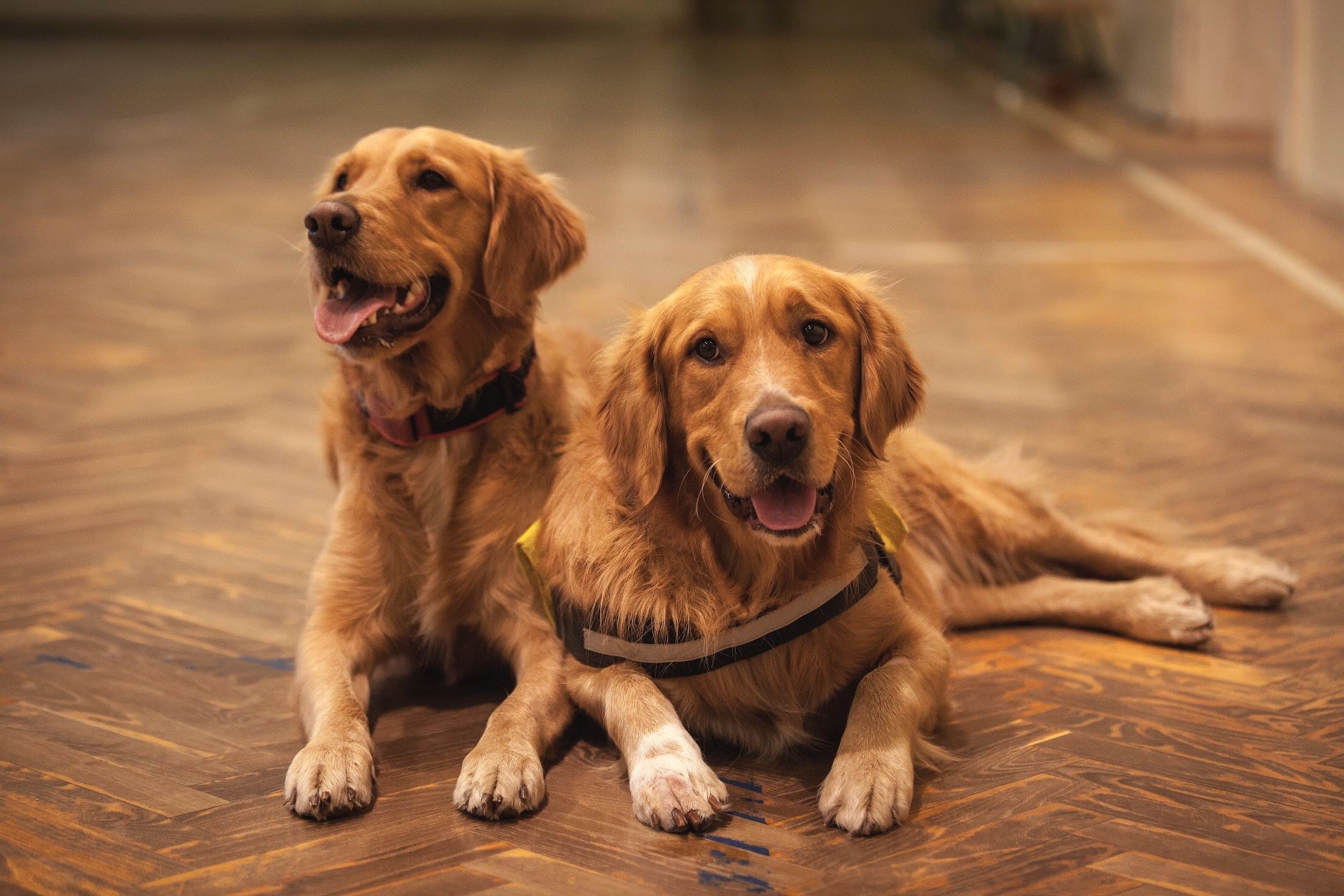We love our four-legged friends to bits, but we don’t love running after them with a vacuum trying to clean up their pet hair! If you’re looking for a low maintenance dog breed, or if you have allergies and want to minimize the pet hair in your household, here you’ll discover which dogs shed the least, and which dogs shed like crazy. Though shedding is intimidating for many people, it doesn’t have to be a huge problem. Here are five expert tips on how to control your dog’s shedding.

Dogs that shed the least and the most
Breed matters when it comes to the amount of shedding you have to control. All dogs shed their fur, even hypoallergenic ones. However, some breeds shed more than others. Alaskan Malamutes, for example, blow their entire coats twice a year.
Other breeds, like the short-haired Italian Greyhound or Boston Terrier, do not need to be groomed nearly as often. Grooming and brushing are still important for their long-term health. But, they naturally shed far less than other breeds.
In general, the dog breeds that shed the most have a double coat. Many are also long-haired. Long-haired double-coated breeds like the Border Collie can be some of the worst shedding culprits. Border Collie shedding is usually excessive in the fall and spring, so it’s important that you learn how to groom a Border Collie as they tend to shed year-round.
Other heavy shedders include:
- Akita
- American Eskimo Dog
- Beagle
- Belgian Sheepdogs
- Bernese Mountain Dog
- Chihuahua
- Chow Chow
- Dalmatian
- German Shepherd
- Golden Retriever
- Great Pyrenees
- Labrador Retriever
- Newfoundland
- Pug
- Samoyed
- Shiba Inu
- Siberian Husky
- St. Bernard
Four expert tips to control dog shedding
While you can never completely stop your dog from shedding, you can control it. Here are five tips recommended by the experts.
Grooming regularly with the right tools
Nothing beats regular grooming. Regular grooming, especially brushing, is essential for controlling your dog’s shedding. Brushing removes excess fur. It also moves the oils on your dog’s skin around more evenly. Evening out your dog’s natural oils is important because it helps the fur stay in place longer.
It is also important to choose the correct tool for the job. You need to purchase the right brush and shedding tools. There are many different grooming tools available, but the tool best for your pooch will be determined by your dog’s breed and their type of fur. For example, a bristle brush with wide and long tines is better for dogs with long hair. The brush should be able to reach completely underneath their long outer coat. Those dogs with shorter or curlier hair may do better with a wire-pin brush or a comb.
Visit a professional groomer
Regular visits to a professional groomer can also help control your dog’s shedding and keep them in good health. Fur that is not regularly groomed is a breeding ground for bacteria, fleas, and ticks.
Obviously, you can mitigate some of this risk by grooming your dog yourself. However, professional groomers are trained in using the right tools and techniques for your specific breed. They know what to use to remove all the dead hair they can. This efficiency is ideal when you want to control a dog’s shedding. The less dead hair there is to fall out, the less shedding that will occur.
Feed your dog the right diet
This is a tip you may not have considered before in relation to pet hair and shedding. However, the right diet can help keep shedding down. Diet is actually important for controlling human shedding as well. For both humans and dogs the right proportion of vitamins and minerals, especially iron, helps hair remain in place.
The best way to ensure your dog has the proper nutrition is by feeding them high-quality dog food. You should look for a food that has a protein source—beef, chicken, etc.—as the first ingredient. Your veterinarian can point you towards the correct foods for your specific dog.
Although vitamins and minerals are important, you should be careful about supplementing your dog’s diet with them. Use supplemental vitamins only if your vet recommends it. It is much better for your dog to receive all the vitamins and minerals they need to keep their shedding under control through their diet.

Keep your dog well hydrated
As with diet, the correct amount of water per day can control your dog’s shedding. Dehydration can lead to dry skin in a dog. Dry skin can cause excess shedding in addition to other health concerns. A hydrated dog is a healthy dog whose shedding will remain under control.
Knowing the exact right amount of water for your dog can be a challenge. The best course of action is to ensure they always have access to clean, freshwater. However, you can also keep this tip in mind: an adult dog needs approximately an ounce of water per pound of body weight per day.
Final thoughts
Shedding is an unfortunate fact of life with a dog. Yet, by following the expert tips in this article, you can keep your dog’s shedding under control. While you may not ever be able to remove those tufts of hair from floating around your home, you can control them. Be careful about the breed you choose if you have allergies, groom your pooch regularly, take them to a professional groomer, feed them the correct diet, and give them enough water. These are the most effective ways to control your dog’s shedding.



















